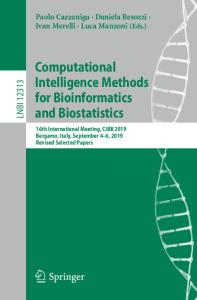Synthesis of (poly)gallic acid in a bacterial growth medium
- PDF / 1,159,080 Bytes
- 7 Pages / 432 x 648 pts Page_size
- 13 Downloads / 261 Views
MRS Advances © 2019 Materials Research Society DOI: 10.1557/adv.2019.466
Synthesis of (poly)gallic acid in a bacterial growth medium Danilo Vona1, Gabriella Buscemi1,3, Roberta Ragni1, Mariangela Cantore3, Stefania R. Cicco2, Gianluca M. Farinola1, Massimo Trotta3* *Corresponding Author: [email protected] 1
Dipartimento di Chimica, Università degli Studi di Bari Aldo Moro, Via Orabona 4 70126, Bari Italy ICCOM CNR Istituto di Chimica dei Composti OrganoMetallici, Consiglio Nazionale delle Ricerche, Via Orabona 4 70126, Bari, Italy 3 IPCF-CNR Istituto per i processi Chimico-Fisici, Consiglio Nazionale delle Ricerche, Via Orabona 4, 70126, Bari, Italy
2
ABSTRACT
Bioelectronics requires versatile, efficient, and low-cost interfaces between the biological entities and the conductive unit. Conductive polymers represent a valid choice to assemble such interfaces able to extract or impinge charges between the biological units and the conductive electronic systems. A drawback in the use of such systems is that the polymerization reaction often takes place in environments whose chemical and physical characteristics clash with the mild conditions required for living biological systems. In the present work, we successfully prove that the conductive polymer poly(gallic acid) can be synthesized in medium designed for bacterial growth, characterised by the presence of several adverse conditions including numerous chemicals, high ionic strength, and almost neutral pH. The gallic acid successfully polymerizes within few hours and with a 40% yield, by exploiting the catalytic activity of the enzyme laccase from the polypore mushroom Trametes versicolor. The resulting polymer is characterised by absorption and Nuclear Magnetic Resonance spectroscopies. The viability of Rhodobacter sphaeroides culture, assessed via the coffee-ring technique, shows an important, but not complete detrimental effect of the gallic acid on the bacterial growth.
INTRODUCTION: Clean energy production is a tight requirement for the growing needs of the population on Earth and for the sustainable development of the planet. A large scientific
Downloaded from https://www.cambridge.org/core. Access paid by the UC Santa Cruz, on 21 Dec 2019 at 22:13:27, subject to the Cambridge Core terms of use, available at https://www.cambridge.org/core/terms. https://doi.org/10.1557/adv.2019.466
community is actively looking at the exploitation of metabolically active bacteria to the purpose of producing environmental safe energy. This requires an intimate contact between ad-hoc designed devices able to collect from or donate to the bacterial cells charges produced by the metabolic activity. Such bioeletronic devices must be fully compatible with the living bacterial cells.[1-3] Soft conductive materials are often used as active films for interfacing the electrodes with the living cells or proteins.[4] Organic polyconjugated semiconductors [5-8] represent a valid option as conductive soft materials in biodevices. Among many conductive polymers, poly(gallic acid)
Data Loading...











